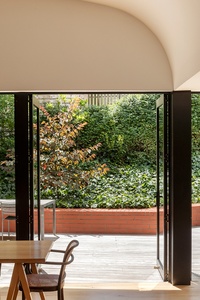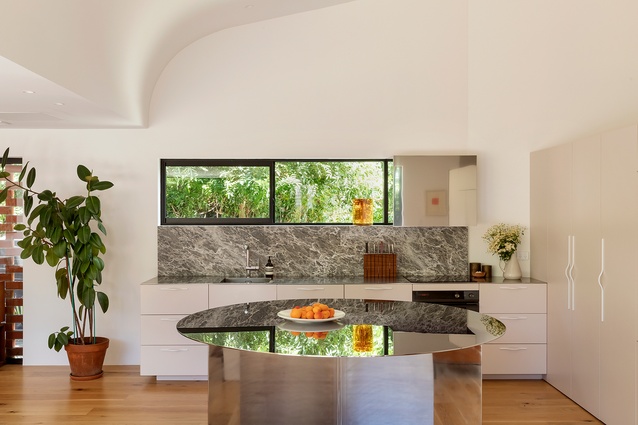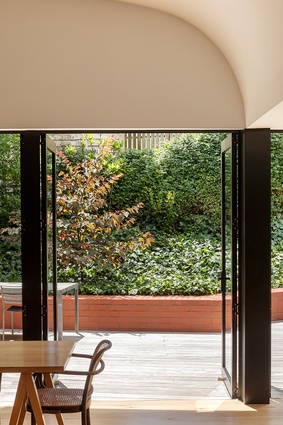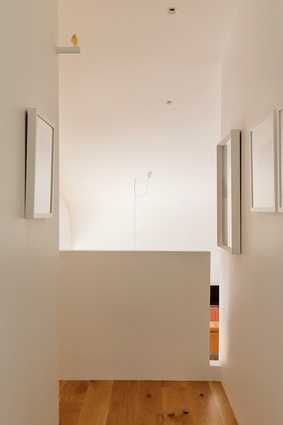Interior Spaces: Geometric surprise
Architect Henri Sayes of Sayes Studio embraces the curve in one of his most recent projects — his own home. Amanda Harkness takes a closer look at the thinking behind the design.
Architects’ own homes are special, revealing as much about what inspires them as their willingness to experiment. In Henri Sayes’ most recent abode, there’s some homage to Aalto’s Maison Louis Carré on the outskirts of Paris (1956), where a sinuous, curved ceiling deftly guides guests from entry to living. Here, too, there is a layering of form with function, which creates both privacy and a place to present art.

But it’s Sayes’ appetite for experimentation, seen across a series of moments, both exterior and interior, that stands out. The house form is an asymmetric gable with strong, angular geometry, cranked brick walls and an amplified, black, cedar-clad soffit. In contrast, the interior is much softer, with circular and arched motifs repeating in both plan and section.
Split levels and gradients of ceiling height work cleverly to delineate space within the open-plan area of the compact house, with a curved ceiling emphasising the spatial shift from the familiar 2.4m dimension in the living room, raking upwards to a lofty 5.0m at its peak, above the kitchen and dining area. Beside this space, a curved stair proves an efficient way to transition the 11 steps from one level to the next in a limited footprint.
Without an architrave or a skirting board in sight, the walls of this house become a seamless backdrop across which the light traverses and plays with magical effect. Somehow, despite their 10mm thickness, these walls seem to have heft and yet it is the lightness of material which enabled Sayes to create such a sculptural experience.

“You can cut or wet the back of GIB® and it essentially bows itself and curves really nicely, like a living gypsum paper,” he explains. “It seems a very natural thing to do.”

The curve motif builds an interior language that runs through the entire project, from the landscaping to the kitchen island, the entry area and the stair. “It’s about how you can roll from one space to another,” says Sayes. “It adds a softness to how you move, rather than encountering a series of abrupt transitions.”
After such apparent success — the house won a Te Kāhui Whaihanga National Architecture Award for Housing last year — will we see more of the curve in Sayes’ work? “In my world, you do something and then you’ve done it,” says the architect. “And then you want to do something else.” We look forward to the next instalment.
The Interior Spaces series is brought to you by GIB® in partnership with ArchitectureNow.
Learn more about GIB® Standard plasterboard in the video below:
ArchitectureNow works with a range of partners in the A&D supply sector to source appropriate content for the site. This article has been supported by GIB®.















